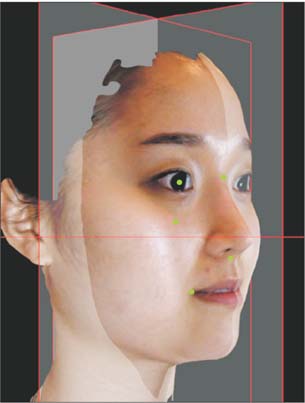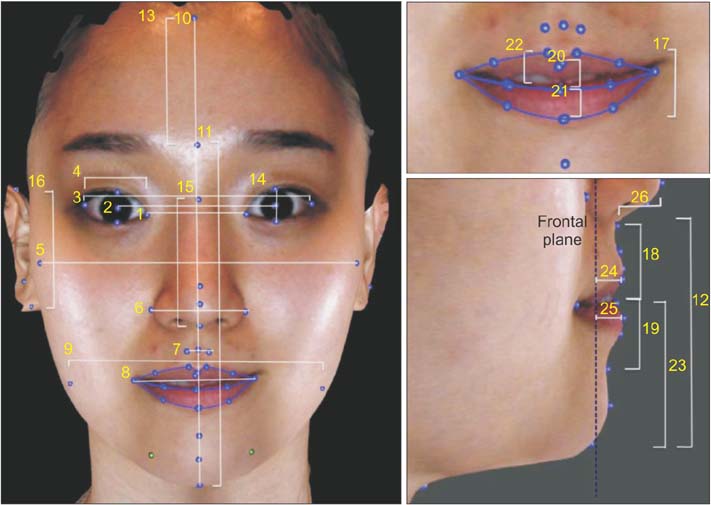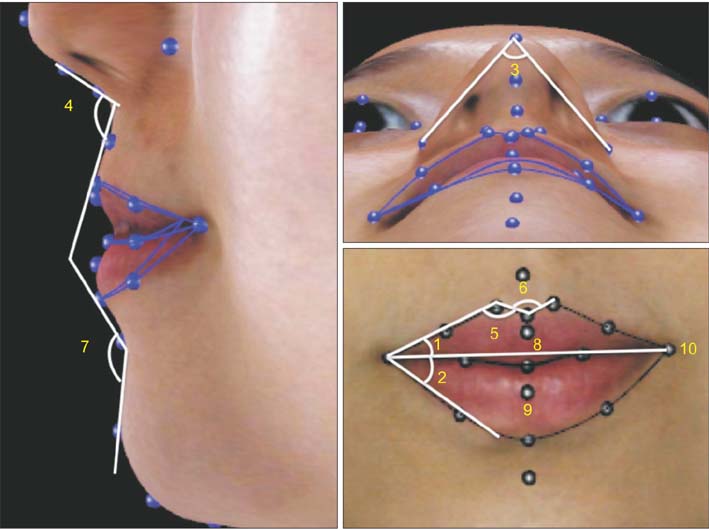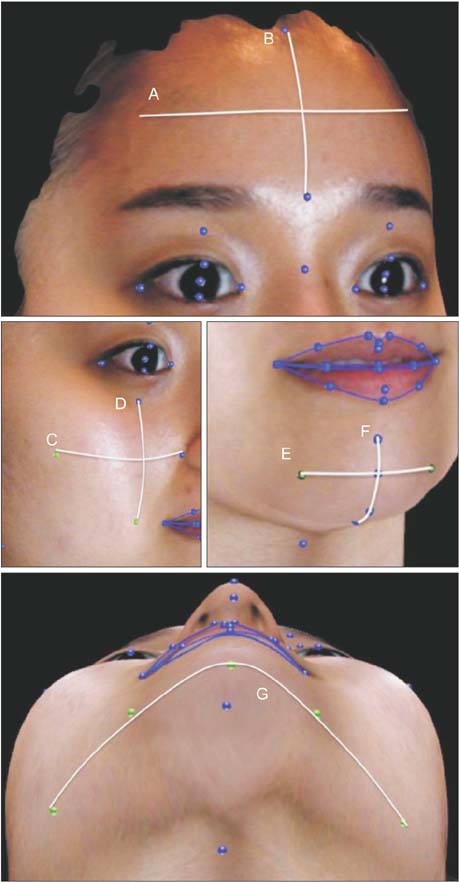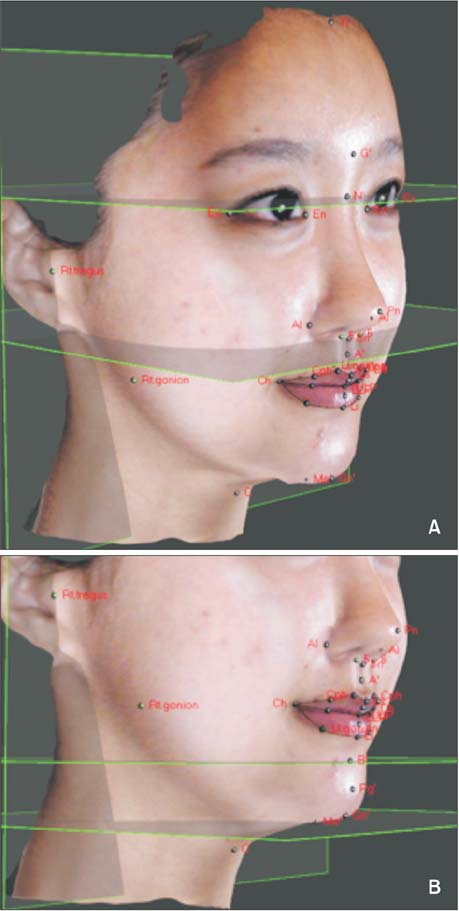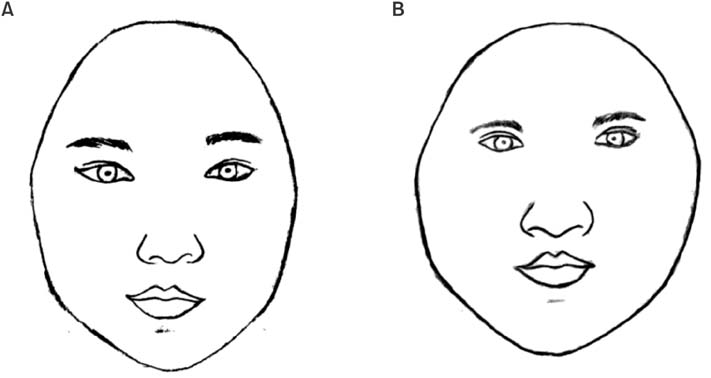Korean J Orthod.
2017 Mar;47(2):87-99. 10.4041/kjod.2017.47.2.87.
A three-dimensional photogrammetric analysis of the facial esthetics of the Miss Korea pageant contestants
- Affiliations
-
- 1Graduate School, The Catholic University of Korea, Seoul, Korea.
- 2Department of Orthodontics, College of Medicine, The Catholic University of Korea, Seoul, Korea.
- 3Department of Postgraduate Studies, the Universidad Autonóma del Paraguay, Asunción, Paraguay.
- 4Postgraduate Orthodontic Program, Arizona School of Dentistry & Oral Health, A.T. Still University, Mesa, AZ, USA.
- 5Graduate School of Dentistry, Kyung Hee University, Seoul, Korea.
- 6Department of Orthodontics, Oral Biology Research Institute, Kyung Hee University School of Dentistry, Seoul, Korea.
- 7Formal Adjunct Professor at UCLA and Clinical Professor at USC Orthodontics Currently Private Practice in Los Angeles, CA, USA.
- 8Department of Orthodontics, Seoul St. Mary's Hospital, The Catholic University of Korea, Seoul, Korea. kook190036@yahoo.com
- KMID: 2400386
- DOI: http://doi.org/10.4041/kjod.2017.47.2.87
Abstract
OBJECTIVE
The aims of this study were to measure and compare the facial dimensions of the Miss Korea pageant contestants and a selected group of women from the general population by using three-dimensional (3D) image analysis, as well as to compare various facial ratios to the golden ratio within each group.
METHODS
Three-dimensional images of 52 Miss Korea pageant contestants (MK group) and 41 young female adults selected from the general population (GP group) were acquired. Fifty-four variables and ratios were measured and calculated. Intergroup comparisons were performed using multivariate analysis of variance.
RESULTS
Compared to the GP group, the MK group showed greater total facial height and eye width, lesser lower-facial height, and lesser facial, lower-facial, and nasal widths. Moreover, compared to the GP group, the MK group had more protruded noses with greater nasolabial angle, greater vertical curvature of the foreheads, lesser horizontal curvature of the cheek, and lesser lower-lip-and-chin volume.
CONCLUSIONS
The MK group had longer faces but smaller lower lips and chins than did the GP group. The golden ratio was not matching the current facial esthetic standards. These data might be beneficial for treatment planning of patients undergoing orthognathic and plastic surgeries.
MeSH Terms
Figure
Cited by 1 articles
-
Three-dimensional changes in lip vermilion morphology of adult female patients after extraction and non-extraction orthodontic treatment
Zhi-Yu Liu, Jie Yu, Fan-Fan Dai, Ruo-Ping Jiang, Tian-Min Xu
Korean J Orthod. 2019;49(4):222-234. doi: 10.4041/kjod.2019.49.4.222.
Reference
-
1. Keim RG, Gottlieb EL, Nelson AH, Vogels DS 3rd. 2007 JCO orthodontic practice study. Part 1: trends. J Clin Orthod. 2007; 41:617–626.2. Kang JM, Kang KH. Effect of malocclusion or orthodontic treatment on oral health-related quality of life in adults. Korean J Orthod. 2014; 44:304–311.
Article3. Piao Y, Kim SJ, Yu HS, Cha JY, Baik HS. Five-year investigation of a large orthodontic patient population at a dental hospital in South Korea. Korean J Orthod. 2016; 46:137–145.
Article4. Baek SH, Kim BH. Determinants of successful treatment of bimaxillary protrusion: orthodontic treatment versus anterior segmental osteotomy. J Craniofac Surg. 2005; 16:234–246.
Article5. Lee JK, Chung KR, Baek SH. Treatment outcomes of orthodontic treatment, corticotomy-assisted orthodontic treatment, and anterior segmental osteotomy for bimaxillary dentoalveolar protrusion. Plast Reconstr Surg. 2007; 120:1027–1036.
Article6. Park JU, Hwang YS. Evaluation of the soft and hard tissue changes after anterior segmental osteotomy on the maxilla and mandible. J Oral Maxillofac Surg. 2008; 66:98–103.
Article7. Sutter RE Jr, Turley PK. Soft tissue evaluation of contemporary Caucasian and African American female facial profiles. Angle Orthod. 1998; 68:487–496.8. Bisson M, Grobbelaar A. The esthetic properties of lips: a comparison of models and nonmodels. Angle Orthod. 2004; 74:162–166.9. Kang YG, Lee YH, Kook YA, Kim SH, Sinclair PM. Comparison of the frontal esthetic preferences in the lower facial portion of Koreans and Caucasians. World J Orthod. 2009; 10:111–116.10. Mertens I, Siegmund H, Grüsser OJ. Gaze motor asymmetries in the perception of faces during a memory task. Neuropsychologia. 1993; 31:989–998.
Article11. Meyer-Marcotty P, Alpers GW, Gerdes AB, Stellzig-Eisenhauer A. Impact of facial asymmetry in visual perception: a 3-dimensional data analysis. Am J Orthod Dentofacial Orthop. 2010; 137:168.e1–168.e8. discussion 168-9.
Article12. Eisenbarth H, Alpers GW. Happy mouth and sad eyes: scanning emotional facial expressions. Emotion. 2011; 11:860–865.
Article13. Sharma VP, Bella H, Cadier MM, Pigott RW, Goodacre TE, Richard BM. Outcomes in facial aesthetics in cleft lip and palate surgery: a systematic review. J Plast Reconstr Aesthet Surg. 2012; 65:1233–1245.
Article14. Galantucci LM, Di Gioia E, Lavecchia F, Percoco G. Is principal component analysis an effective tool to predict face attractiveness? A contribution based on real 3D faces of highly selected attractive women, scanned with stereophotogrammetry. Med Biol Eng Comput. 2014; 52:475–489.
Article15. Kim SY, Bayome M, Park JH, Kook YA, Kang JH, Kim KH, et al. Evaluation of the facial dimensions of young adult women with a preferred facial appearance. Korean J Orthod. 2015; 45:253–260.
Article16. Row J, Rhu YK. A cephalometric analysis on facial esthetics of Korean young adult female. Korean J Orthod. 1988; 18:127–140.17. Aynechi N, Larson BE, Leon-Salazar V, Beiraghi S. Accuracy and precision of a 3D anthropometric facial analysis with and without landmark labeling before image acquisition. Angle Orthod. 2011; 81:245–252.
Article18. Othman SA, Ahmad R, Mericant AF, Jamaludin M. Reproducibility of facial soft tissue landmarks on facial images captured on a 3D camera. Aust Orthod J. 2013; 29:58–65.19. Plooij JM, Swennen GR, Rangel FA, Maal TJ, Schutyser FA, Bronkhorst EM, et al. Evaluation of reproducibility and reliability of 3D soft tissue analysis using 3D stereophotogrammetry. Int J Oral Maxillofac Surg. 2009; 38:267–273.
Article20. Kim YK, Lee NK, Moon SW, Jang MJ, Kim HS, Yun PY. Evaluation of soft tissue changes around the lips after bracket debonding using three-dimensional stereophotogrammetry. Angle Orthod. 2015; 85:833–840.
Article21. Zreaqat M, Hassan R, Halim AS. Facial dimensions of Malay children with repaired unilateral cleft lip and palate: a three dimensional analysis. Int J Oral Maxillofac Surg. 2012; 41:783–788.
Article22. Pancherz H, Knapp V, Erbe C, Heiss AM. Divine proportions in attractive and nonattractive faces. World J Orthod. 2010; 11:27–36.23. Prokopakis EP, Vlastos IM, Picavet VA, Nolst Trenite G, Thomas R, Cingi C, et al. The golden ratio in facial symmetry. Rhinology. 2013; 51:18–21.
Article24. Alam MK, Mohd Noor NF, Basri R, Yew TF, Wen TH. Multiracial facial golden ratio and evaluation of facial appearance. PLoS One. 2015; 10:e0142914.
Article25. Rossetti A, De Menezes M, Rosati R, Ferrario VF, Sforza C. The role of the golden proportion in the evaluation of facial esthetics. Angle Orthod. 2013; 83:801–808.
Article26. Kiekens RM, Kuijpers-Jagtman AM, van't Hof MA, van't Hof BE, Maltha JC. Putative golden proportions as predictors of facial esthetics in adolescents. Am J Orthod Dentofacial Orthop. 2008; 134:480–483.
Article27. Besl P, McKay ND. A method for registration of 3-D shapes. IEEE Trans Pattern Anal Mach Intell. 1992; 14:239–256.
Article28. Farkas LG. Anthropometry of the attractive North American Caucasian face. In : Farkas LG, editor. Anthropometry of the head and face. 2nd ed. New York: Raven Press;1994. p. 159–179.29. Farkas LG, Munro IR. Anthropometric facial proportions in medicine. Springfield, IL: Charles C Thomas;1987.30. Rhodes G. The evolutionary psychology of facial beauty. Annu Rev Psychol. 2006; 57:199–226.
Article31. Swaddle JP, Cuthill IC. Asymmetry and human facial attractiveness: symmetry may not always be beautiful. Proc Biol Sci. 1995; 261:111–116.
Article32. Hönn M, Göz G. [The ideal of facial beauty: a review]. J Orofac Orthop. 2007; 68:6–16. German.
Article33. Sforza C, Laino A, D'Alessio R, Grandi G, Catti F, Ferrario VF. Three-dimensional facial morphometry of attractive adolescent boys and girls. Prog Orthod. 2007; 8:268–281.34. Sforza C, Laino A, D'Alessio R, Grandi G, Binelli M, Ferrario VF. Soft-tissue facial characteristics of attractive Italian women as compared to normal women. Angle Orthod. 2009; 79:17–23.
Article35. Pothanikat JJ, Balakrishna R, Mahendra P, Neeta J. Two-dimensional morphometric analysis of young asian females to determine attractiveness. Ann Maxillofac Surg. 2015; 5:208–212.
Article36. Cunningham M. Measuring the physical in physical attractiveness. Quasi-experiments on the sociobiology of female facial beauty. J Personal Soc Psychol. 1986; 50:925–935.
Article37. Alley TR, Cunningham MR. Averaged faces are attractive, but very attractive faces are not average. Psychol Sci. 1991; 2:123–125.
Article38. Deli R, Galantucci LM, Laino A, D'Alessio R, Di Gioia E, Savastano C, et al. Three-dimensional methodology for photogrammetric acquisition of the soft tissues of the face: a new clinical-instrumental protocol. Prog Orthod. 2013; 14:32.
Article39. Ferrario VF, Sforza C, Poggio CE, Tartaglia G. Facial morphometry of television actresses compared with normal women. J Oral Maxillofac Surg. 1995; 53:1008–1014. discussion 1014-5.
Article40. Baker BW, Woods MG. The role of the divine proportion in the esthetic improvement of patients undergoing combined orthodontic/orthognathic surgical treatment. Int J Adult Orthodon Orthognath Surg. 2001; 16:108–120.41. Farkas LG, Cheung G. Facial asymmetry in healthy North American Caucasians. An anthropometrical study. Angle Orthod. 1981; 51:70–77.42. Faure JC, Rieffe C, Maltha JC. The influence of different facial components on facial aesthetics. Eur J Orthod. 2002; 24:1–7.
Article43. Grammer K, Thornhill R. Human (Homo sapiens) facial attractiveness and sexual selection: the role of symmetry and averageness. J Comp Psychol. 1994; 108:233–242.
Article44. Sforza C, Laino A, Grandi G, Pisoni L, Ferrario VF. Three-dimensional facial asymmetry in attractive and normal people from childhood to young adulthood. Symmetry. 2010; 2:1925–1944.
Article
- Full Text Links
- Actions
-
Cited
- CITED
-
- Close
- Share
- Similar articles
-
- Historical and cultural evaluation for the concept of facial esthetics
- Evaluation of the facial dimensions of young adult women with a preferred facial appearance
- A cephalometric analysis on facial esthetics of Korean young adult female
- Total Facial Structural Micro-fat Graft for Aesthetically Beautiful Facial Contour: 3-Dimensional Facial Contouring
- Facial form analysis of the lower and middle face in young Korean women

